Door sensors are fundamental components of home security systems, working silently but effectively to safeguard your property. These sensors operate on a simple yet ingenious principle: detecting the opening and closing of doors.
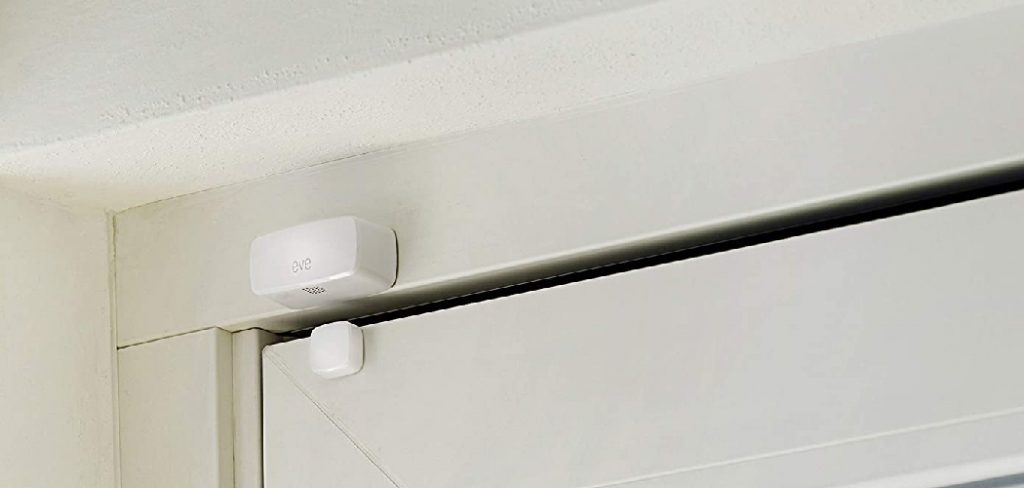
By monitoring the magnetic field between two components—a sensor and a magnet—door sensors can detect when a door is opened or closed. When the door is shut, the magnet aligns with the sensor, completing the circuit and signaling that the door is secure.
However, when the door is opened, the magnet moves away from the sensor, breaking the circuit and triggering an alarm or alert. In this article, we’ll delve into how do door sensors work, exploring their different types, applications, and how they contribute to the overall security of your home or business.
Importance of Home Security Systems
The significance of home security systems extends far beyond the simple monitoring of entry points to a property. These systems serve as a deterrent to potential burglars, providing an essential layer of protection for both the physical assets within a home and the individuals residing there.
In the event of an intrusion, the quick response triggered by a security system can significantly reduce the damage and loss, while simultaneously alerting local authorities to the situation. Furthermore, the presence of a comprehensive security system can lead to reductions in insurance premiums, reflecting the decreased risk of theft and damage.
Beyond theft prevention, modern security systems now offer features such as fire and carbon monoxide detection, adding an additional layer of safety to protect against common household hazards.
Significance of Understanding How They Work
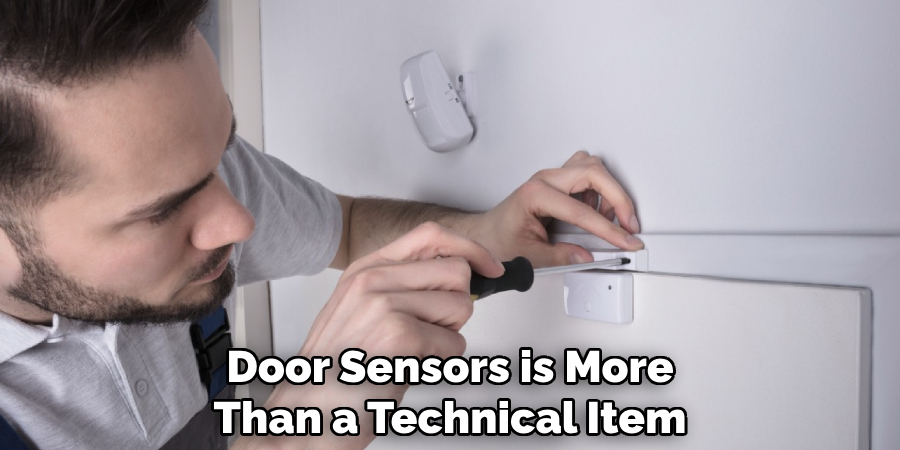
Comprehending the functionality of door sensors is more than a technical curiosity; it empowers homeowners and business owners with knowledge to make informed security decisions. When individuals understand how door sensors operate, they can better assess the quality, reliability, and suitability of different security systems for their specific needs.
This understanding also enables users to perform basic troubleshooting tasks, potentially saving on costly maintenance or repair services. Furthermore, a deep insight into sensor operation can enhance security measures by identifying and mitigating potential weaknesses in a system. For example, knowing that sensors depend on a magnetic field allows for the strategic placement of sensors in areas less likely to be tampered with by intruders.
In essence, familiarity with the inner workings of door sensors can lead to optimized security solutions that are finely tuned to protect against contemporary threats.
Types of Door Sensors
Door sensors come in various types, each designed to cater to different security needs and deployment scenarios. The most common types include:
Surface Contact Sensors
Surface contact sensors are the most widely used type of door sensor. They consist of two parts: one that attaches to the door and another to the door frame. These sensors are visible but can be designed to blend with the door’s aesthetic. Ideal for residential and commercial use, they are economical and easy to install.
Recessed Contact Sensors
Recessed contact sensors offer a more discreet security solution. Installed within the door and frame, these sensors are virtually invisible when the door is closed, preserving the door’s aesthetics without compromising on security. They require more effort to install than surface sensors but are preferred for their sleek appearance.
Magnetic Switch Sensors
Magnetic switch sensors work on the principle of detecting changes in magnetic field strength around a door. Like surface contact sensors, they are composed of a sensor and a magnet that align when the door is closed. These sensors are versatile and can be used in both regular and sliding doors.
Infrared Beam Sensors
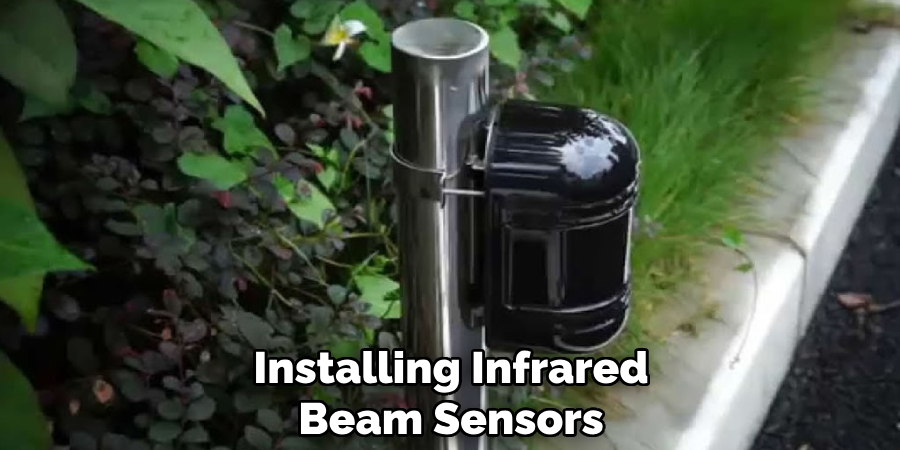
Infrared beam sensors do not rely on physical contact or proximity to function. Instead, they emit an infrared beam across a door opening. When the beam is interrupted, as would happen when the door opens, the sensor triggers an alert. These sensors are well-suited for high-security areas or as secondary security measures.
Each of these sensors has its strengths and weaknesses, making them suited for particular applications. The choice between them depends on factors such as the level of security required, the aesthetics of the installation environment, and the budget available for security investments.
13 Methods How Do Door Sensors Work
1.Principle of Operation:
Door sensors operate on a simple but effective principle known as reed switch technology. This technology consists of two main components: a sensor and a magnet. The sensor is typically installed on the door frame, while the magnet is placed on the door itself. When the door is closed, the magnet aligns with the sensor, creating a magnetic field that keeps the switch closed.
This completes the circuit and indicates that the door is securely closed. However, when the door is opened, the magnet moves away from the sensor, breaking the magnetic field and opening the switch. This triggers an alarm or alert, indicating that the door has been opened.
2.Installation and Placement:
Proper installation and placement of door sensors are crucial for ensuring their effectiveness. Magnetic contact sensors should be installed with the sensor on the door frame and the magnet on the door itself. The sensor and magnet should be aligned properly when the door is closed to ensure reliable operation.
Additionally, sensors should be placed strategically on all entry points, including doors and windows, to provide comprehensive coverage.
3.Wiring and Connectivity:
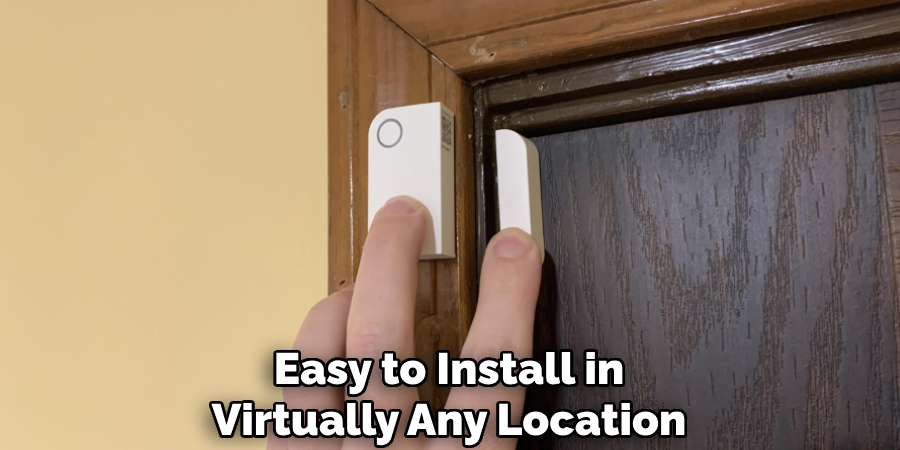
Traditional door sensors require wiring for power and connectivity to the alarm system. The sensor is typically wired to the alarm control panel using low-voltage wires, which carry signals between the sensor and the control panel.
Wireless door sensors, on the other hand, communicate with the alarm system using radio frequencies or other wireless protocols. They do not require wiring and are easy to install in virtually any location.
4.Power Source:
Door sensors are powered by batteries or by the alarm system’s power source, depending on the type of sensor. Traditional wired sensors are powered by the alarm system’s power source and do not require batteries. However, wireless sensors rely on batteries for power and must be replaced periodically to ensure continued operation.
The lifespan of the batteries varies depending on factors such as sensor type, usage, and battery quality.
5.Tamper Resistance:
Many door sensors are equipped with tamper-resistant features to prevent unauthorized access or tampering. These features may include anti-tamper switches that trigger an alarm if the sensor is removed or tampered with. Additionally, some sensors have tamper-proof enclosures or covers that cannot be easily opened without triggering an alarm.
These features help enhance the security of the sensor and prevent intruders from disabling or bypassing it.
6.Integration with Alarm Systems:
Door sensors integrate seamlessly with alarm systems, providing real-time monitoring and alerts in the event of unauthorized entry. When the sensor detects door movement, it sends a signal to the alarm control panel, which then activates the alarm and notifies the homeowner or monitoring service.
Many modern alarm systems also offer remote monitoring and control features, allowing homeowners to monitor their doors and receive alerts on their mobile devices.
7.Adjustable Sensitivity:
Some door sensors are equipped with adjustable sensitivity settings, allowing users to customize the sensor’s response to door movement. This can be useful for fine-tuning the sensor’s performance to minimize false alarms while ensuring reliable detection of unauthorized entry.

Sensitivity settings can typically be adjusted through the alarm system’s control panel or mobile app.
8.Testing and Maintenance:
Regular testing and maintenance are essential for ensuring the proper functioning of door sensors. Homeowners should test their door sensors periodically to verify that they are operational and properly aligned. Additionally, batteries in wireless sensors should be replaced as needed to prevent downtime and ensure continued reliability.
It’s also important to keep the sensor and surrounding area clean and free of debris to prevent false alarms and ensure optimal performance.
9.Integration with Home Automation Systems:
Door sensors can be integrated with home automation systems to provide enhanced security and convenience. For example, they can be programmed to trigger other smart home devices, such as lights or security cameras, in the event of unauthorized entry.
Additionally, smart door sensors can be controlled remotely via smartphone apps, allowing homeowners to monitor their doors and receive alerts from anywhere.
10.Detection Mechanism of Motion Sensors
Motion sensors, integral to enhancing security systems, utilize various technologies to detect movement within a defined area. These sensors predominantly rely on passive infrared (PIR), microwave, or dual technology mechanisms to identify changes in the environment.
11.Passive Infrared (PIR) Sensors:
PIR sensors detect motion by monitoring changes in heat levels caused by moving objects within their field of view. When a warm body, such as a human or animal, moves across the sensor’s detection zone, the sensor detects the change in infrared energy levels and triggers an alarm or alert.
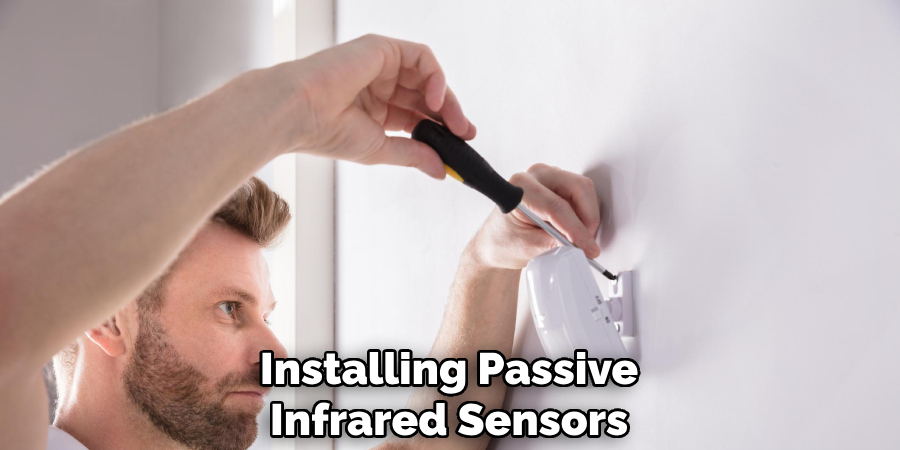
This technology is widely used due to its reliability and ability to reduce false alarms by distinguishing between inanimate objects and genuine intruders based on heat signatures.
12.Microwave Sensors:
Microwave sensors operate by emitting microwave pulses and then measuring the reflection of these pulses off moving objects. They can cover a larger area than PIR sensors and are less susceptible to environmental changes, such as temperature fluctuations.
However, they can be more prone to false alarms and are usually more expensive, making them less common in residential settings.
13.Dual Technology Sensors:
To maximize effectiveness and minimize false alarms, some motion sensors combine PIR and microwave technologies. These dual-technology sensors require both the heat signature (PIR) and motion (microwave) detection to trigger an alarm.
This approach significantly reduces the likelihood of false alarms, as both conditions must be met for activation. Dual technology sensors are particularly useful in areas where environmental conditions may lead to false detections with single-technology sensors.
Each of these detection mechanisms offers unique advantages, allowing for their application in various security scenarios. Choosing the right motion sensor depends on specific needs, such as the size of the area to be monitored, the environment, and the level of accuracy required.
Wiring and Connection to Alarm System
The process of wiring and connecting sensors to an alarm system is a critical step in setting up a home security system. Wired sensors, including door and motion sensors, are directly connected to the alarm system’s control panel through low-voltage electrical wiring. This connection is essential for the transmission of signals from the sensors to the control panel whenever a security breach is detected.
For wired sensors, the installation process involves running wires from each sensor to the alarm control panel. This can be a complex task, especially in finished homes where wires may need to be run through walls, ceilings, or floors.
Professional installation is often recommended to ensure that the wiring is properly secured and hidden, to avoid any potential damage to the home’s aesthetics or structure.
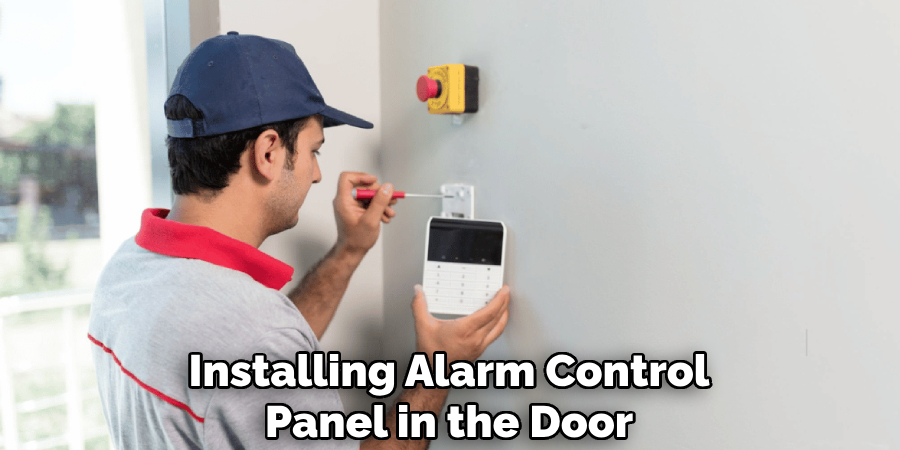
Wireless sensors, on the other hand, communicate with the alarm system’s control panel via radio frequency or other wireless protocols. The primary advantage of wireless sensors is their ease of installation, as they do not require physical wires to connect to the control panel.
Homeowners can often install wireless sensors themselves, positioning them in strategic locations without worrying about the constraints of wiring.
Regardless of the type—wired or wireless—proper connection to the alarm system is crucial for the sensors to function effectively. Wired sensors must be correctly connected to the control panel’s terminals, following the manufacturer’s installation guidelines to ensure a secure and reliable connection.
For wireless sensors, it is important to pair them with the control panel according to the system’s setup procedures, which usually involves placing the system in a pairing mode and activating the sensor to establish a connection.
After installation, it is essential to test each sensor to confirm that it is correctly wired or paired and functioning as expected. This step ensures that the alarm system will respond appropriately in the event of an intrusion, providing the intended security and peace of mind to the homeowner.
Communication with Alarm Control Panel
The communication between sensors and the alarm control panel is a core component of a home security system’s functionality. This communication ensures that any detected breach, whether it be an opened door or detected motion, is immediately relayed to the control panel, which then takes the programmed action, such as sounding an alarm, sending an alert, or notifying a monitoring service.
Wired Communication:
In wired systems, sensors are connected to the control panel through electrical wires. This direct connection allows for a continuous and reliable communication pathway. Signals sent from the sensors to the control panel are instantaneous, ensuring immediate response to potential security threats.
The stability and reliability of wired communication make it a preferred choice for many security system installations, especially in environments where wireless signals may be weak or interrupted.
Wireless Communication:
Wireless sensors communicate with the control panel using radio frequencies or other wireless communication protocols such as Wi-Fi, Z-Wave, or Zigbee. This type of communication offers flexibility in sensor placement and is ideal for properties where wiring is difficult or undesirable. Despite the potential for interference from other wireless devices or structural elements of a building, modern wireless systems employ various techniques to ensure robust and secure communication.
Technologies like frequency hopping and encryption are used to maintain a secure and reliable connection between sensors and the control panel.
Smart Home Integration:
With the advent of smart home technology, communication between sensors and the alarm control panel has evolved beyond traditional security responses. Many modern systems integrate with smart home platforms, enabling homeowners to create automated actions based on sensor activity.
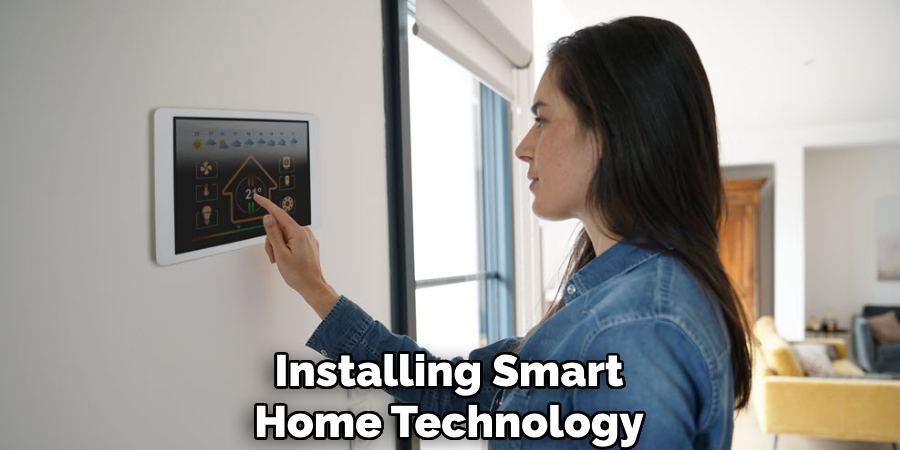
For example, a door sensor could trigger smart lights to turn on or a smart thermostat to adjust the temperature when a door is opened or closed. This level of integration enhances both security and convenience, allowing homeowners to tailor their systems to their lifestyle.
In conclusion, the method of communication between sensors and the alarm control panel is a critical factor in the effectiveness of a home security system.
Whether through wired or wireless means, this communication ensures that the system can alert homeowners and authorities of security breaches promptly, providing peace of mind and protection for the property.
Conclusion
In conclusion, understanding how door sensors work is fundamental to comprehending the mechanisms behind an effective home security system.
Whether they operate through magnetic contacts, pressure sensors, or motion detection, door sensors play a pivotal role in detecting unauthorized entry attempts and triggering alarm responses.
By integrating seamlessly with alarm systems and often offering smart home compatibility, door sensors provide homeowners with invaluable peace of mind and proactive security measures. Regular maintenance, including testing, cleaning, and battery replacement, ensures optimal functionality and reliability.
With their ability to detect intrusions early and deter potential threats, door sensors contribute significantly to safeguarding homes and protecting loved ones. Thanks for reading, and we hope this has given you some inspiration on how do door sensors work!
About
Safety Fic is a distinguished figure in the world of Diy design, with a decade of expertise creating innovative and sustainable Diy solutions. His professional focus lies in merging traditional craftsmanship with modern manufacturing techniques, fostering designs that are both practical and environmentally conscious. As the author of diy, Safety Fic delves into the art and science of Safety Fic-making, inspiring artisans and industry professionals alike.
Education RMIT University
(Melbourne, Australia) Associate Degree in Design (Safety Fic) Focus on sustainable design, industry-driven projects, and practical craftsmanship. Gained hands-on experience with traditional and digital manufacturing tools, such as CAD and CNC software.
Nottingham Trent University
(United Kingdom) Bachelor’s in diyfastly.com and Product Design (Honors) Specialized in product design with a focus on blending creativity with production techniques. Participated in industry projects, working with companies like John Lewis and Vitsoe to gain real-world insights.
Publications and Impact
In diy, Safety Fic his insights on indoor design processes, materials, and strategies for efficient production. His writing bridges the gap between artisan knowledge and modern industry needs, making it a must-read for both budding designers and seasoned professionals.
